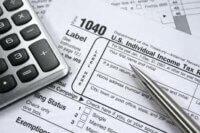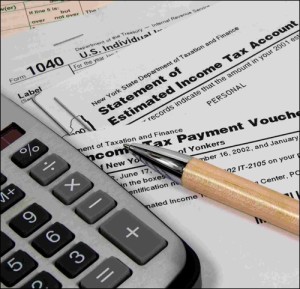Do you postpone, then grit your teeth, and steel yourself before diving into preparing data for your tax return? Don’t feel alone. I think about 90 percent of the population feels this way. Below are listed some steps to make this less challenging and more rewarding.
Get Organized. At the beginning of the year, set up a file marked taxes with the current year beside it. Periodically throughout the year file important paperwork that will be the foundation of your tax return:
-
Acknowledgment letters from nonprofits for your charitable donations – this is a requirement to substantiate charitable deductions. Your canceled check is not sufficient evidence according to the IRS.
-
Vehicle registration fees, but not the cost of renewing a driver’s license. That expense is not deductible.
-
Property tax payments.
-
Unreimbursed employee business expenses (no longer deductible for federal taxes, but CA allows them), to name a few.
-
Copes of estimated payment vouchers, if you are subject to pay estimates.
-
A record of alimony payments made (if the alimony was decreed prior to 2018.
-
A note with the date and amount of stimulus payment received.
It’s easy to overlook these valuable deductions unless you file them in the right place when they occur.
A good start: Open a file marked “2020 Taxes.” When documents arrive near the end of the month: W2s, mortgage interest statements (Form 1098), K-1s and 1099s, Form 1095 from the health insurance exchange, etc., slip those into the file so that the data is in one place.
Be sure to include the amount of the stimulus payment you received in 2020. This is not taxable income, but a worksheet must be included in the tax return to reconcile it to 2020 income to determine if you should have received more or less. The result of this calculation may automatically increase your refund or add additional liability.
If you are a partner in a partnership or a shareholder in a Sub S corporation you will have to wait for your K-1 until the tax return is filed for that entity. Due dates for calendar year entities are March 15 and if the entity gets an extension, your wait may extend to September 15. This will delay your filing, however, you can get an extension through October 15 to file your personal return.
Know the timeline: The IRS will begin accepting electronically-filed and paper returns around January 25, 2021. The date is still up in the air. The fourth installment of estimated tax payments for 2020 was Friday, January 15. If you missed the deadline, make your payment now.
Estimated tax payments are due on April 15, June 15, September 15, and January 15. If you have no withholding (as wage earners do) and you will have a federal tax liability of $1,000 or more, then you are subject to making estimated tax payments.
The due date for filing individual returns is April 15. The IRS has not indicated they will extend the due date due to Covid. If you cannot meet the deadline, file an extension using IRS Form 4868. Remember: an extension is only an extension of time to file, not an extension of time to pay. If you anticipate owing taxes, you must pay them with the extension form by April 15.
Taxpertise is located at 450 2nd Street West, Sonoma, 95476. 707.935.1755 Bonnie Lee and Angela Andrews are Enrolled Agents licensed to prepare taxes and represent taxpayers at all levels within the Internal Revenue Service.




Be First to Comment